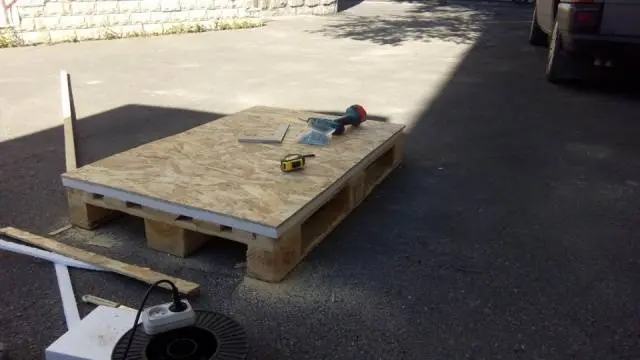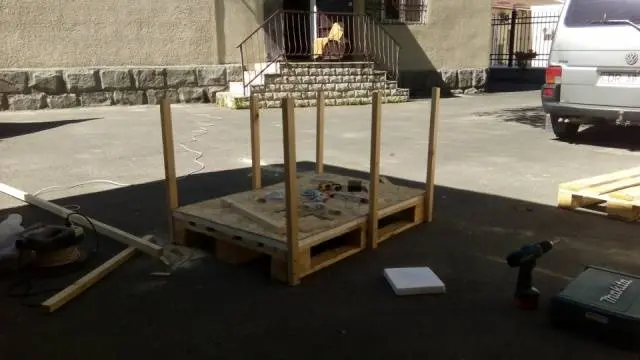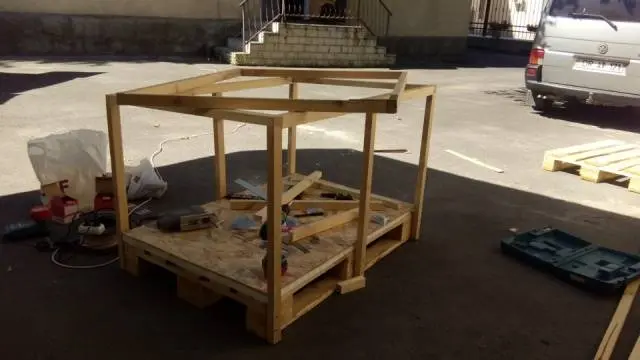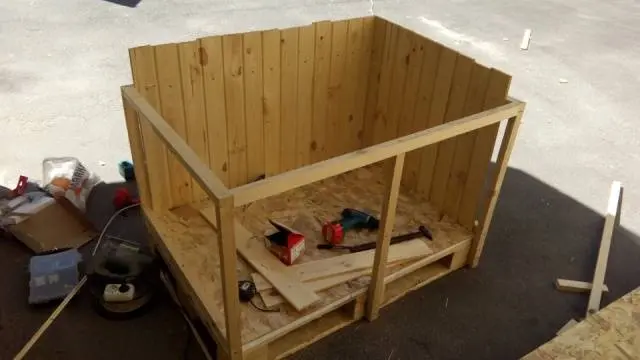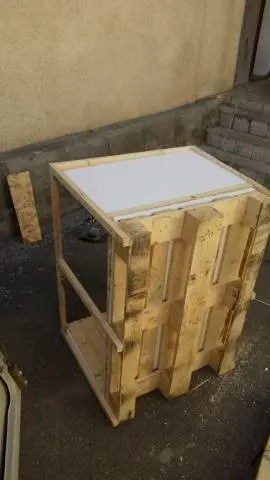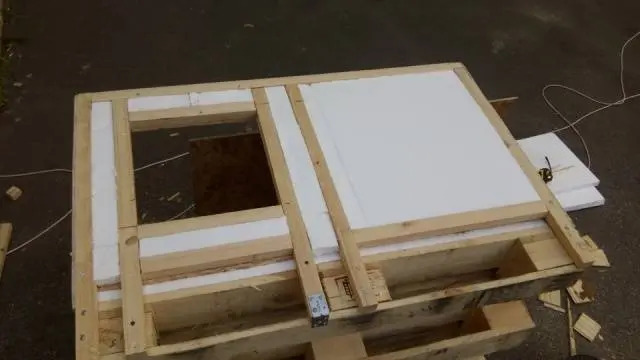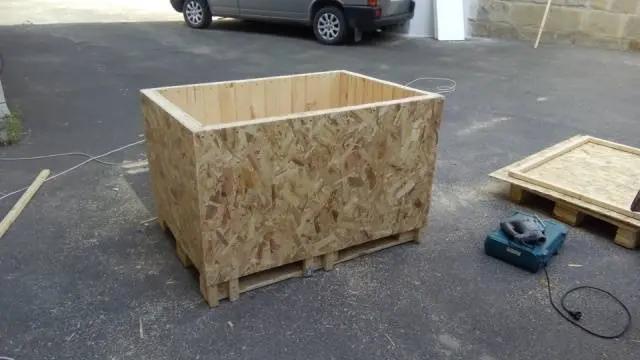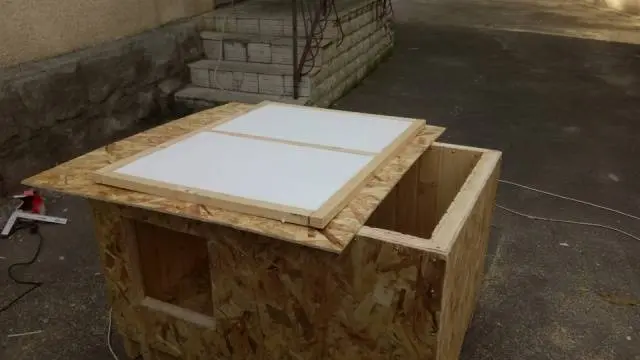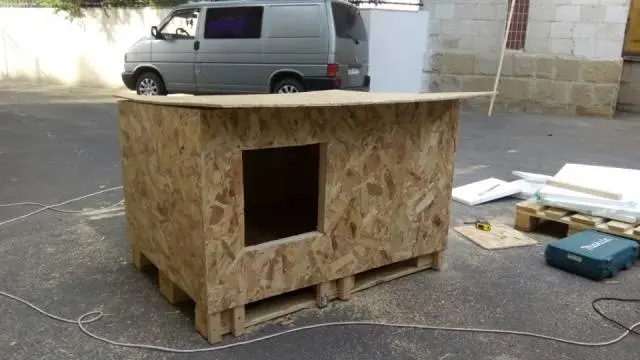Contents
The best material for building a doghouse is wood. However, the edged board is expensive, and it is not always possible to purchase it. Other improvised materials are not suitable for the kennel. How, then, to solve the problem with the housing of a domestic dog? The way out of the situation will be wooden pallets. They are also called pallets. These are wooden boards of a certain size, on which products are moved in warehouses or stores. As they wear out, the pallets are thrown away. And they are just that very free improvised material suitable for building a kennel. Now we will figure out how to quickly build a dog house from pallets and insulate it.
Where to start
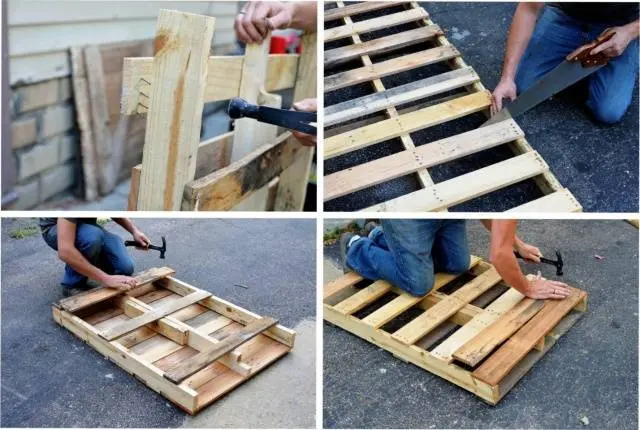
So, making a dog kennel with your own hands begins with the preparation of material. In our case, you need to get at least five pallets. By themselves, the shields, as a finished structure for the walls of the booth, will not work. The pallet consists of a bar, on which boards are stuffed on both sides with a small gap. To build a dog house, pallets will need to be disassembled into building material. Only one shield is left intact, which will go entirely to the manufacture of the bottom of the kennel.
The parts of the dismantled pallets must be sorted immediately. The boards will go to the lining of the dog kennel, and the frame of the house will be made of timber.
What size to make a booth
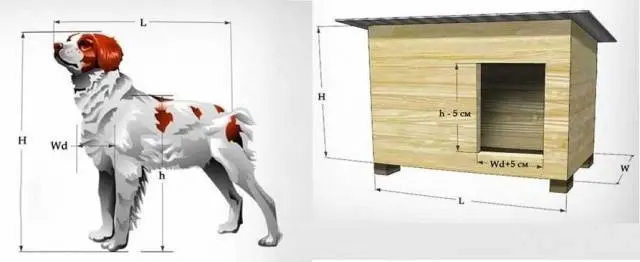
There are rules by which the dimensions of the dog house are calculated. The dog should feel free inside the kennel and be able to turn around. Too spacious booth also can not be done. It will be cold in winter. You can determine the size of the house only by measuring the dimensions of the dog.
The photo shows a diagram showing all the places where measurement is required. The width and depth of the room is calculated according to the length of the dog. The lying dog is measured from the edge of the extended front paws to the end of the tail, and a margin of 15 cm is added. However, in our case, the bottom is a finished pallet with fixed dimensions. There are only two ways out here:
- If the dimensions of the dog greatly exceed the allowable dimensions, the pallet will have to be disassembled, and the bottom of the required dimensions should be folded from the blanks.
- When the results of measurements of the dog showed small deviations from the required dimensions or the dog is much smaller, then the pan for the bottom of the kennel can be left in its original state.
Unlike the dimensions of the bottom, the height of the booth can be freely adjusted. After all, the walls will be assembled with their own hands from disassembled pallets into blanks. You can determine the height of the kennel by the height of the dog, which is measured at the withers. For a margin of height, 10 cm is added to the result.
We calculate the size of the hole
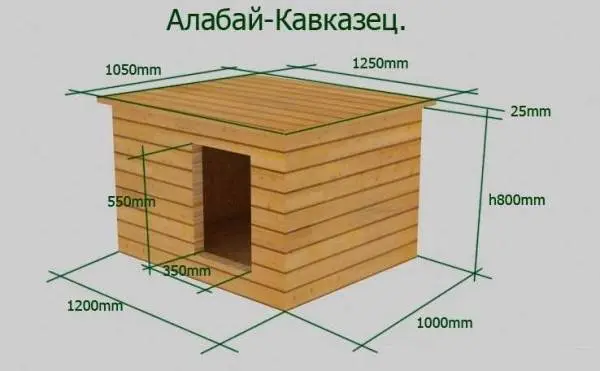
The hole in the booth is not cut out just like that. Here you will need to make a few more measurements. The dog is the watchman. The dog must freely jump in and out of the kennel to perform its guard duties. The width of the hole is cut 5-8 cm more than the width of the dog’s chest. 5 cm are added to the measurement at the withers, determining the height of the manhole.
The manhole on the booth can be cut out in a rectangular or oval shape, but it is not located in the center of the front wall. It is better to make an entrance with an offset to one of the side walls, then a blind corner is obtained in the booth. Here the dog will be able to hide from the wind.
Winter variants of the kennel provide for a partition inside the house with another manhole. The booth turns into two compartments: a bedroom and a vestibule. The idea, of course, is good, but not suitable for all breeds of dogs. Conscientious guards rarely visit the bedroom due to the fact that they cannot control their territory from there. Such dogs constantly lie in the vestibule, looking out of the hole, and the bedroom, in fact, remains unclaimed. When making a kennel from pallets with your own hands, it is still better to stay at a one-room house with an offset manhole.
Decide on the shape of the roof

The roof of the house can be made flat with one slope or build a gable structure. The second option is considered not very successful. The only plus can only be an increase in height due to the gable roof on a small booth. Building such a structure is much more difficult than a flat roof. With the onset of winter frosts, extra space will make itself felt. It will be very cold in the booth, and all the heat will rise to the ridge of the roof and go out into the street through the cracks.
A shed flat roof is easy to manufacture. It can even be cut out of a piece of OSB board, and covered with any roofing material on top. Another advantage of a flat roof is the ability for a dog to lie on it. Many dogs like to lie on the roof of the booth in the summer and watch their territory.
If, in terms of aesthetics, only a gable design is acceptable, then it is advisable to nail a ceiling in the booth that separates the attic space from the living space.
Since we are talking about the roof, we need to stop a little on the manufacture of the canopy. Many dogs like to stand outside even during rain and snow. If there is extra building material and desire, a small canopy can be installed above the booth. Then the dog will be able to walk freely in any weather, and in the summer it will hide from the sun.
Methods and materials used for warming the booth
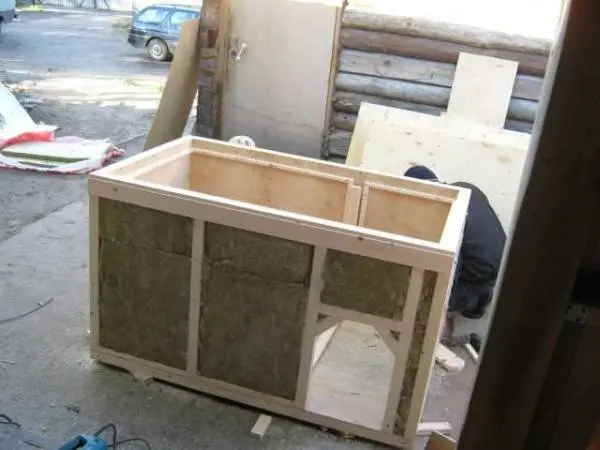
You can insulate a dog kennel with your own hands with any heat-insulating material. Mineral wool is ideal. Styrofoam is also not bad, but the dense material forms the effect of a thermos inside the house. If in winter the hole is closed with a curtain, it will be difficult for the dog to breathe due to the lack of fresh air. In this case, leave a gap or make a vent.
It is necessary to insulate all structural elements at once: walls, bottom and ceiling. You don’t have to use a lot of insulation. Nature arranged it so that dogs warm themselves well with wool. A thick layer of insulation will create a sharp difference between the outdoor temperature and inside the house. For a dog, such a change of conditions is unacceptable.
Master class for making booths from pallets
Now we will look at a step-by-step photo of how to make a dog house from old pallets. As you remember, we dismantled all the shields into blanks, only one pallet for the bottom remained. Here we begin the construction of the kennel with it:
- Thanks to the pallet, we will get a booth on legs, and dampness and rainwater will not penetrate inside. We make the house insulated, so we lay a sheet of foam plastic 20 mm thick on the pallet, and on top we fix the OSB plate with self-tapping screws.

- At the corners and in the center of the long sides of the pallet we nail racks of timber with a section of 50×50 or 40×40 cm.

- From the same beam on top we knock down the frame strapping. The roof will be attached to this frame in the future.

- We sheathe the frame of the booth from the inside with boards. For work, the pallets were taken old, so there can be a lot of chipped chips on them. So that the dog does not get hurt, we grind all the boards well with sandpaper.

- After fastening the inner lining on the outside of the box, cells were obtained. Here we lay the foam with a thickness of 20 mm.

- We collect a manhole on the front wall from a bar, after which we also insulate all the cells with foam.

- From the OSB plate with an electric jigsaw, we cut out four rectangles according to the dimensions of the sides of the box, and from them we make the outer skin of the booth. On the front wall, where there should be a hole, we cut out the window in the OSB with the same electric jigsaw.

- For a roof from a bar, we knock down the frame. From the inside we sheathe it with a board. We put foam plastic in the cells, and we fix the OSB plate on top. It must be cut larger than the booth itself to make a visor.

- In the final, you should get such a booth for the dog.

On the video Booth for a dog from construction waste:
The walls and roof made of OSB are resistant to moisture, but it is better to paint them. For reliability, you can lay a hard roofing.










